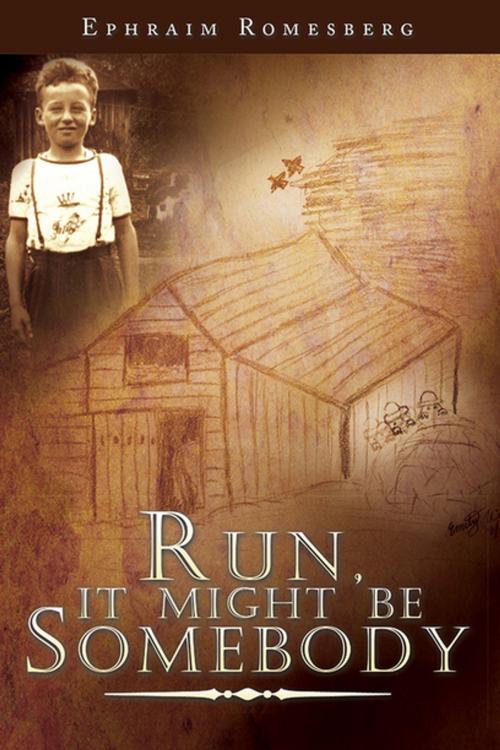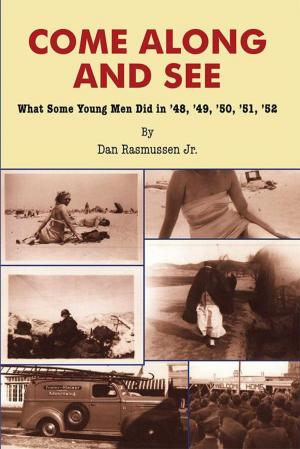| Author: | Ephraim Romesberg | ISBN: | 9781462844098 |
| Publisher: | Xlibris US | Publication: | October 24, 2005 |
| Imprint: | Xlibris US | Language: | English |
| Author: | Ephraim Romesberg |
| ISBN: | 9781462844098 |
| Publisher: | Xlibris US |
| Publication: | October 24, 2005 |
| Imprint: | Xlibris US |
| Language: | English |
Book Summary of Run It Might Be Somebody
By Ephraim Romesberg
The book covers a span of over 70 years starting with the author as a shy sickly boy who was the last of 11 children living on a farm during the great depression and ends with the author as a 74 year old man, who still runs ultra distant marathons.
In the first chapter, the author presents stories and anecdotes, often in a humorous way, to describe some of the joys and hardships of growing up in a large family during the great depression. Compared to today, life was very different then with no TVs, very few radios, no computers, no running water in the home (except in the pantry where there was a hand pump), and very few toys or luxuries of any kind. Also, and perhaps more significantly, kids, for the most part, were given chores and did not have time to get into trouble. There were no drugs, no gangs, and no boredom.
Being the youngest in the family and somewhat sickly, the author was to some extent given some slack on farm chores. Even so, he had daily chores to do starting from a very early age such as milking cows, driving the old model T truck, fetching the cows, cleaning stables, feeding livestock, driving a tractor, and helping wherever help was needed.
The book describes the one room school house that all kids in the area attended at that time. The authors dad had to quit such a school while in third grade to work on the farm when his father died leaving the family without any money or food. His mother completed school through eighth grade which was all that most people considered necessary in those days especially for women. So there was little or no pressure from the parents to go to school after that. As a result, the three oldest boys in the family never went past eighth grade. There were other reasons to stay home and the most important one was they had no decent clothing. The book tells about the Authors mother removing the white stripes from an old pair of band pants and one of the three boys who never completed high school, then removing all the little white threads so that he could wear the pants to school. He also had no decent shoes so he added home made soles to the bottoms of a pair of his work shoes by attaching them with roofing nails so that he could make the long four mile walk to the school. After several trips the nails poked through the bottoms of the shoes and wore holes in his feet. Because of that and the lure of the upcoming hunting season, and the need to work on the farm, he quit school after only a month or so. Except for the three oldest boys, all of the kids completed high school and several went on to college.
The book describes such things as making hay the old fashioned way, husking corn by hand, hoeing corn and then picking rocks while resting, butchering a pig, delivering baby pigs and calves, threshing to separate the grain from the straw, and the authors Mom squirting milk straight from the cows tit at cats and grandkids.. Also described are how the young boys in the family learned to handle a team of horses when they were only 10 years old, how one of the boys accidentally cut off his little sisters finger, how an uncle lost his leg to the stump puller, how the author, when he was only eight years old, tried to explain to a blind preacher how to use the out house and the Sears Roebuck catalog which was used instead of toilet paper.
Also described, and a little more on the lighter side, one of the authors sisters claimed that you havent lived until you ran barefoot through a cow pasture and felt the warmth of a fresh cow patty ooze up between your toes.
The early chapters also describe the authors time in the US Navy where he was sea sick every time the ship left the dock. Hunting stories tell of deer hunting with more failures than successes. One successful
Book Summary of Run It Might Be Somebody
By Ephraim Romesberg
The book covers a span of over 70 years starting with the author as a shy sickly boy who was the last of 11 children living on a farm during the great depression and ends with the author as a 74 year old man, who still runs ultra distant marathons.
In the first chapter, the author presents stories and anecdotes, often in a humorous way, to describe some of the joys and hardships of growing up in a large family during the great depression. Compared to today, life was very different then with no TVs, very few radios, no computers, no running water in the home (except in the pantry where there was a hand pump), and very few toys or luxuries of any kind. Also, and perhaps more significantly, kids, for the most part, were given chores and did not have time to get into trouble. There were no drugs, no gangs, and no boredom.
Being the youngest in the family and somewhat sickly, the author was to some extent given some slack on farm chores. Even so, he had daily chores to do starting from a very early age such as milking cows, driving the old model T truck, fetching the cows, cleaning stables, feeding livestock, driving a tractor, and helping wherever help was needed.
The book describes the one room school house that all kids in the area attended at that time. The authors dad had to quit such a school while in third grade to work on the farm when his father died leaving the family without any money or food. His mother completed school through eighth grade which was all that most people considered necessary in those days especially for women. So there was little or no pressure from the parents to go to school after that. As a result, the three oldest boys in the family never went past eighth grade. There were other reasons to stay home and the most important one was they had no decent clothing. The book tells about the Authors mother removing the white stripes from an old pair of band pants and one of the three boys who never completed high school, then removing all the little white threads so that he could wear the pants to school. He also had no decent shoes so he added home made soles to the bottoms of a pair of his work shoes by attaching them with roofing nails so that he could make the long four mile walk to the school. After several trips the nails poked through the bottoms of the shoes and wore holes in his feet. Because of that and the lure of the upcoming hunting season, and the need to work on the farm, he quit school after only a month or so. Except for the three oldest boys, all of the kids completed high school and several went on to college.
The book describes such things as making hay the old fashioned way, husking corn by hand, hoeing corn and then picking rocks while resting, butchering a pig, delivering baby pigs and calves, threshing to separate the grain from the straw, and the authors Mom squirting milk straight from the cows tit at cats and grandkids.. Also described are how the young boys in the family learned to handle a team of horses when they were only 10 years old, how one of the boys accidentally cut off his little sisters finger, how an uncle lost his leg to the stump puller, how the author, when he was only eight years old, tried to explain to a blind preacher how to use the out house and the Sears Roebuck catalog which was used instead of toilet paper.
Also described, and a little more on the lighter side, one of the authors sisters claimed that you havent lived until you ran barefoot through a cow pasture and felt the warmth of a fresh cow patty ooze up between your toes.
The early chapters also describe the authors time in the US Navy where he was sea sick every time the ship left the dock. Hunting stories tell of deer hunting with more failures than successes. One successful















